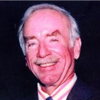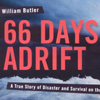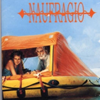STOWAWAY
Berthed at Playa Grande Marina just west of La Guaira, the port that serves Caracas, Venezuela, Siboney, my 39 foot Robert Clark cutter, had the entire Caribbean within reach. With my built-in crew of sons Bill Jr. 16, Jim 15 and Joe 7, we called during the early 1970’s at almost every island off the coasts of Venezuela. Together with my buddy, Siro Cugini, who sailed aboard his 37 foot Polaris with his two sons as crew, we put to sea on June 28, 1973 on a month-long voyage of discovery to the Island of Margarita and points beyond. With us, as director of all fishing activities, was Neil Martin better known aboard as the “White Hunter”, or the “Hunter” for short.
Dawn June 30 greeted us while at anchor off Puerto Frances, Venezuela, with a once in a lifetime spectacle: an almost total eclipse of the rising sun. Bright red in the eastern horizon the moon covered ¾ of the bottom portion that left a new moon-like crescent at the top. About an hour later the sun had climbed past the moon to shine as bright as ever allowing us to locate, snake in and anchor atop Bajo Sabana. With the Hunter in the lead, the five boys dove right in, spear guns in hand. Within a half hour I had 15 lobster tails on boil.
After many long upwind tacks, July 4 found us anchored at a small cove on the northeast corner of Cubagua. Famous, though almost totally forgotten, it harbors the remains of the first city in the Americas, years older than the well-known title-holder, St. Augustine, Florida. Christopher Columbus stopped in the bay where we now anchored on August 15, 1498, on his third voyage of discovery. An artesian well that flowed then with fresh clean water and a seeming unlimited supply of pearls attracted hoards that set up camp on the southeast corner or the island. The small enclave grew until in the year 1520 the town of Nueva Cadiz was officially founded. Substantial homes went up braced by two foot thick mud brick walls. The town flourished until disastrous earthquakes in 1530 and 1545 devastated the area. The land sank about 12 feet, which left, still visible today, but the top 5 feet of the walls of the buildings showing. The seas, picked clean of pearl bearing oysters at about the same time, soon caused the first city in the Americas to be abandoned, deserted and forgotten until this very today.
A short sail to Porlamar on the Island of Margarita then an overnighter to Juan Griego, a small fishing port on its north coast, put us ever closer to Venezuela’s out islands. Together with the crew of Polaris we anchored off the main pier late in the afternoon of July 6. The kids went right to work to load fuel and water while Siro and I shopped for groceries for the ever-starving crew. A tap on the pier provided bath water for the crew who, after sprucing up did, as sailors are wont to do, hit the town. The boys had befriended a couple of cute young girls and while they chatted under a shade tree, the skippers found the local Yacht Club bar where a local band kept us entertained until midnight when we returned to our boats, the crew of Polaris hit their bunks and Siboney put to sea.
Anchors hauled and sails raised we aimed the bow towards Blanquilla Island, 35 miles to the north. At 5 knots, we would approach land a bit after dawn. The boys collapsed below as I balanced the sails, tied the tiller down and got Siboney to almost sail herself. With a 15 knot breeze, 3 foot seas, a bright moon and a belly full of good food and rum, I could sail on forever.
Until disaster hit, so to speak. A couple of hours before dawn a dark shape bolted out of the cabin, headed for the gunwale to dump her supper over the side. A stowaway! “What the hell is this?” I asked Billy, who followed the young girl up the companionway. “Well dad, this girl wanted a ride to Caracas to visit with her family there. She had no money to travel so I told her we’d be happy to take her along”, was his simplistic reply. Good God, how would we explain this to his mother?
Shook up and in need of sleep, I turned the helm over to Billy and his friend, hopped into my bunk, debated within this new events, until I passed right out minutes later. Dawn found us off the Los Hermanos chain of islands, a set of high rocky pinnacles that jut out of the ocean. Once we dropped the hook off Isla Fondeador, the entire crew plus our stowaway snorkeled into a small cave. Back on board, I found all hands except for Billy and our stowaway. The dinghy was nowhere to be seen. What now!
Concerned because of the strong currents, steady breeze and not infrequent sharks, we lifted anchor and began to circle the small but tall isle. Bill and the girl had gone back to the boat, hopped into the dinghy intent on circling the island but the current and breeze had thrust them far away to leeward. To their frantic waving for help I waved adios and sailed away. We did pick them up after making them sweat.
Anchored at Playa Felucho on the island of Blanquilla we met the only two permanent residents, Mario Pedro and a midget, and together we hiked to the top of a small hill where we saw Polaris on the horizon, headed our way. With both crews aboard for a hearty lobster and snapper lunch, I threw on the table my number one predicament, what to do with our stowaway. Conclusion: we had to return her to Juan Griego. Hunter was out, he’d stay with Polaris. All was set. We’d sail at dusk, drop her off at dawn and sail back. Meanwhile, the Hunter and the boys took off on a spear fishing expedition.
Back late in the afternoon with three snappers and four large lobsters, they hit me with great news. They had found a fishing boat on the other side of the island that was heading back to Margarita at 11 p.m. and would gladly take the young girl back with them. It took seconds to hoist anchor and reach full RPM’s. Tied alongside, we invited the captain aboard for happy hour. The entire crew of 12 men followed him. My fears were quickly dispelled as all appeared to be serious seamen. Two were acquainted with the girl’s parents. Billy gave the girl twenty bolivars spending money and bid our Stowaway episode ciao.
© William Butler, 2004


